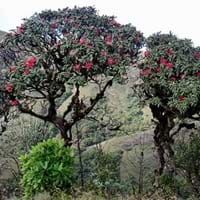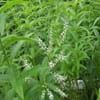Life Span
Perennial
Perennial
Origin
Argentina, Chile
Europe, Southern Asia, Southeastern Asia, India, China
Types
Aloysia arequipensis,Aloysia brasiliensis,Aloysia barbata
cinnamomeum, zeylanicum, delavayi
Habitat
Roadsides, Scrubs
Dappled Shade, Woodlands
USDA Hardiness Zone
8-11
7-9
Sunset Zone
Not Available
H1, 8, 9, 14, 15, 16, 17, 23, 24
Habit
Spreading
Upright/Erect
Minimum Height
Not Available
Minimum Width
Not Available
Flower Color
White
White, Red, Pink
Flower Color Modifier
Not Available
Bicolor
Fruit Color
Brownish Red
Brown, Chocolate
Leaf Color in Spring
Green
Green, Dark Green
Leaf Color in Summer
Green
Dark Green
Leaf Color in Fall
Green
Dark Green
Leaf Color in Winter
Not Available
Dark Green
Leaf Shape
Lance shaped
Ovate
Plant Season
Spring, Summer, Fall
Spring, Summer, Fall, Winter
Sunlight
Full Sun, Partial Sun
Full Sun, Partial Sun
Growth Rate
Medium
Medium
Type of Soil
Clay, Loam
Loam, Sand
The pH of Soil
Neutral, Alkaline
Acidic
Soil Drainage
Well drained
Average
Bloom Time
Late Summer
Early Spring, Spring, Late Spring
Tolerances
Not Available
Not Available
Where to Plant?
Ground, Pot
Ground
How to Plant?
Seedlings, Stem Planting
Seedlings
Plant Maintenance
Medium
Medium
Watering Requirements
Requires regular watering
Reduce water once established
In Summer
Lots of watering
Lots of watering
In Spring
Moderate
Moderate
In Winter
Average Water
Average Water
Soil pH
Neutral, Alkaline
Acidic
Soil Type
Clay, Loam
Loam, Sand
Soil Drainage Capacity
Well drained
Average
Sun Exposure
Full Sun, Partial Sun
Full Sun, Partial Sun
Pruning
Remove damaged leaves, Remove dead branches, Remove dead leaves
Prune after flowering, Prune if you want to improve plant shape, Remove dead or diseased plant parts
Fertilizers
All-Purpose Liquid Fertilizer
Doesn't require fertilization when grown in rich soil, Fertilize in early spring, fertilize in winter, Mulch
Pests and Diseases
Insects, Red blotch
Phytophthora, Thripes
Plant Tolerance
Drought
Not Available
Flowers
Insignificant
Showy
Flower Petal Number
Single
Single
Foliage Texture
Coarse
Coarse
Foliage Sheen
Glossy
Glossy
Attracts
Not Available
Butterflies
Allergy
Skin irritation
Not Available
Aesthetic Uses
Not Available
Showy Purposes
Beauty Benefits
Not Available
Not Available
Environmental Uses
Air purification
Insect Repellent, Shadow Tree, Windbreak
Medicinal Uses
Antispasmodic, Febrifuge
antimicrobial, Cancer, Dermatitis
Part of Plant Used
Leaves
Flowers, Leaves
Other Uses
Repellent, Used as an insecticide
Used as fuel, Used as insect repellent, Used as Ornamental plant, Used for its medicinal properties
Used As Indoor Plant
No
No
Used As Outdoor Plant
Yes
Yes
Garden Design
Container, Herb, Vegetable, Mixed Border
Feature Plant, Mixed Border, Topiary / Bonsai / Espalier
Botanical Name
ALOYSIA triphylla
RHODODENDRON arboreum
Common Name
Lemon Verbena, Lemon beebrush
Chalan, Rose Tree, Tree Rhododendron
In Hindi
Lemon Verbena
लाल बुरांश
In German
Lemon Verbena
Rhododendron arboreum
In French
Aloysia
Rhododendron arboreum
In Spanish
Aloysia triphylla
arboreum rododendro
In Greek
Lemon Verbena
Rhododendron arboreum
In Portuguese
Aloysia triphylla
arboreum Rhododendron
In Polish
Lemon Verbena
różanecznik drzewiasty
In Latin
Lemon Verbena
Prunus arborea
Phylum
Magnoliophyta
Magnoliophyta
Class
Magnoliopsida
Magnoliopsida
Family
Verbenaceae
Ericaceae
Genus
Aloysia
Rhododendron
Clade
Angiosperms, Asterids, Eudicots
Angiosperms, Asterids, Eudicots
Tribe
Not Available
Not Available
Subfamily
Not Available
Not Available
Number of Species
Not Available
Not Available
Properties of Lemon Verbena and Rhododendron Arboreum
Wondering what are the properties of Lemon Verbena and Rhododendron Arboreum? We provide you with everything About Lemon Verbena and Rhododendron Arboreum. Lemon Verbena doesn't have thorns and Rhododendron Arboreum doesn't have thorns. Also Lemon Verbena does not have fragrant flowers. Lemon Verbena has allergic reactions like Skin irritation and Rhododendron Arboreum has allergic reactions like Skin irritation. Compare all the properties and characteristics of these two plants. Find out which of these plant can be used as indoor plant. If you are interested to decorate your house and garden, find out aesthetic uses, compare them and select the plant which will beautify your surrounding. Along with beautification, try comparing medicinal and edible uses of Lemon Verbena and Rhododendron Arboreum and you can choose the plant having best and most benefits.
Season and Care of Lemon Verbena and Rhododendron Arboreum
Season and care of Lemon Verbena and Rhododendron Arboreum is important to know. While considering everything about Lemon Verbena and Rhododendron Arboreum Care, growing season is an essential factor. Lemon Verbena season is Spring, Summer and Fall and Rhododendron Arboreum season is Spring, Summer and Fall. The type of soil for Lemon Verbena is Clay, Loam and for Rhododendron Arboreum is Loam, Sand while the PH of soil for Lemon Verbena is Neutral, Alkaline and for Rhododendron Arboreum is Acidic.
Lemon Verbena and Rhododendron Arboreum Physical Information
Lemon Verbena and Rhododendron Arboreum physical information is very important for comparison. Lemon Verbena height is Not Available and width Not Available whereas Rhododendron Arboreum height is 910.00 cm and width 300.00 cm. The color specification of Lemon Verbena and Rhododendron Arboreum are as follows:
Lemon Verbena flower color: White
Lemon Verbena leaf color: Green
Rhododendron Arboreum flower color: White, Red and Pink
- Rhododendron Arboreum leaf color: Green and Dark Green
Care of Lemon Verbena and Rhododendron Arboreum
Care of Lemon Verbena and Rhododendron Arboreum include pruning, fertilizers, watering etc. Lemon Verbena pruning is done Remove damaged leaves, Remove dead branches and Remove dead leaves and Rhododendron Arboreum pruning is done Prune after flowering, Prune if you want to improve plant shape and Remove dead or diseased plant parts. In summer Lemon Verbena needs Lots of watering and in winter, it needs Average Water. Whereas, in summer Rhododendron Arboreum needs Lots of watering and in winter, it needs Average Water.





